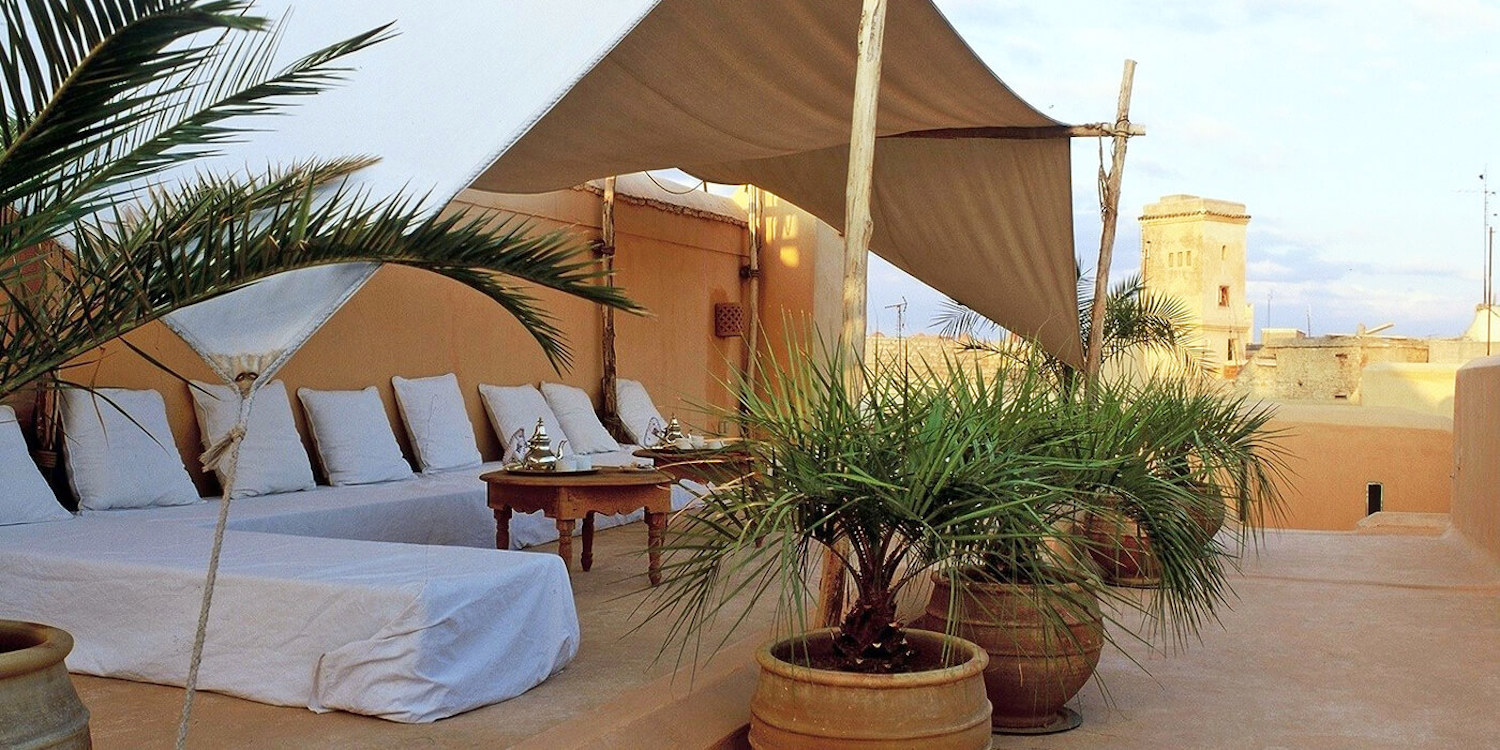
SOUKS, MONUMENTS & GARDENS
With the Jemaa el Fna under your belts, today you’re ready to venture into the maze of SOUKS that extend north of the square. Taking any of the narrow passageways that run off Souk Semmarine, the main artery, will lead to a street specialising in one type of goods or another: babouches, pointy leather slippers that will tick the box for any wannabe young Jasmines or Aladdins, on Souk Smata; perfumes on Souk el Attarine; rugs, kilims and carpets in the Criée Berbère. Kids will particularly enjoy Souk Haddadine, home to a clanging collective of metalworkers, and Souk Sabbaghine, the dyers' souk, where dripping skeins of wool and brightly coloured silk are hung across the street to dry.
Further north, just off Place de la Kissaria, the BEN YOUSSEF MERDERSA [open until 5pm | 70dh, 35dh for children] is the perfect antidote to the hubbub of the souks. Its central courtyard and prayer hall showcase some of the finest examples of Moroccan craftsmanship in the country, a layercake of beautiful ceramic tiles (known as zellij) and elaborate stucco plasterwork topped by carved dark cedarwood. At its peak, the medersa (or Islamic college) housed nearly 900 students; your kids can contemplate the hours that they would have spent studying the Koran each day in one of the tiny dormitories on the medersa’s first floor.
In the afternoon, venture down to the southern medina, where the EL BADI PALACE [open until 4.45pm | 70dh, free for children] is probably the most interesting ancient monument for children to visit. Once the palace complex of Sultan Ahmed el Mansour (who’s buried in the nearby Saadian Tombs), it now lies in ruins, its crumbling ramparts dotted with cumbersome storks’ nests. The immense central courtyard is a good place for younger kids to let off some steam after the closer confines of the crowded souks – though watch out for the drops into the sunken gardens and the two main pools. At the back of the palace, a series of tunnels lead to gloomy dungeons that were still in use as a prison less than a century ago.
From the palace, head a few hundred metres up Avenue Houman el Fetouaki to Place Foucault, near the Koutoubia. There’s a CALÈCHE (horse-drawn carriage) stop here; hop in (after you’ve confirmed a price!) and take a carriage ride around the city walls to the Ville Nouvelle, Marrakesh’s colonial new town, and the JARDIN MAJORELLE. The colourful gardens [open until 5.30pm, until 6pm from May to September | 70dh, under-12s free] were once owned by fashion designer Yves Saint Laurent and are a shady oasis full of fountains and exotic plants and ponds filled with goldfish. Saint Laurent’s old studio, the central pavilion that’s painted in a rich cobalt blue, is now home to a museum of Berber art and design [30dh, under-12s free]. To get back to the Medina, you can pick up a petit taxi on the main road, 150m south of the gardens.
TOP TIP Remember that haggling in the souks is all part of the experience. Never accept the first price you’re offered; counter with around a third of that and then expect to settle somewhere in between. Most shops in the souk close Friday afternoons.
THE LIJOMA LOWDOWN
Delve deeper with our tips on what to read and watch before you go, foods and drinks your kids must try, and some key cultural advice
NEED TO KNOW
A handy overview of Morocco’s weather and climate throughout the year, with recommendations for the best time to visit










